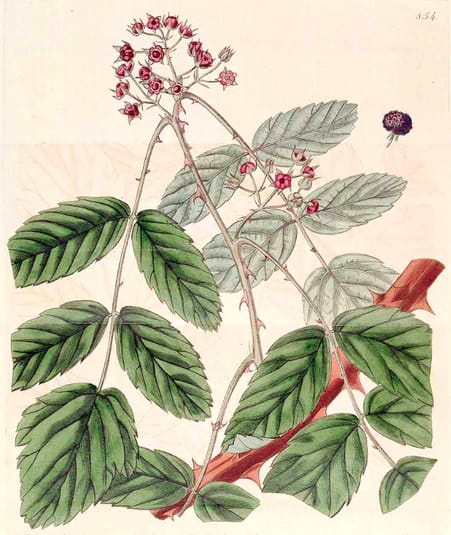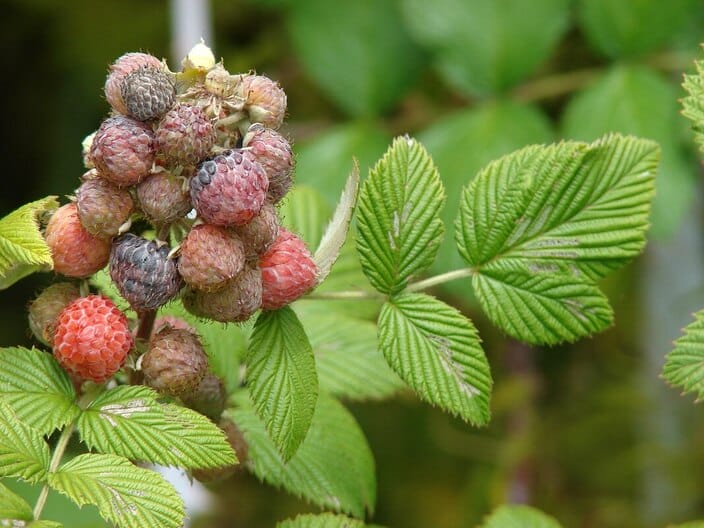Rubus, Kan da ka ri ཀན་ད་ཀ་རི
Kan da ka ri (Tibetan) Rubus niveus
Rubus niveusBotanical Register, vol. 10 (1824)
 Rubus niveus
Rubus niveus(Photo by Forest & Kim Starr) (Wikimedia)
Botanical name:
Rubus spp.
Several types of Kanda ka ri are recognised in Tibetan Medicine:
- Kanda ka ri dkar po (Kanda ka ri), R. niveus (White barked variety)
- Kanda ka ri smug po, R. subornatus var. melandenus or R. biflorus
- Kanda ka ri ‘m stag sher: Solanum xanthocarpum
- Ga bra, R. ellipticus (Red-barked variety)
Parts used:
Herb; stems and branches
Temperature & Taste:
Neutral/Cool. Sweet, Bitter, Pungent
Uses:
1. Clears Wind-Heat:
-Common Cold, beginning of Contagious diseases
-Fever, Fever from Wind, Disturbed Fever, Unripe Fever
2. Clears Phlegm, Stops Cough:
-Cough, Wheezing
3. Benefits Qi:
-increases Vitality
Dose:
Decoction: 3–9 grams
Powder: 1–3 grams
Substitutes:
1. Wood of Sambucus sibirica or Sambucus manshurica
2. Young shoots or stems of Raspberry
3. Flowers of Sambucus nigra
4. Solanum xanthocarpum
Main Combinations:
1. Fever:
i. Rubus Kanda ka ri is used with Tinospora (Sle tres) for Wind Fever.
ii. Rubus Kanda ka ri with Tinospora, Elecampane and Galangal. These are used for acute Fever, to ‘Ripen’ a Fever, or to make a ‘Hidden’ Fever manifest.
iii. to the preceding can be added Triphala; this is then used for Wind-Heat Fever, Cold, Hypertension, Headache (as in Decoction of Seven Gems of Tibetan Medicine)
iv. Fever from Influenza, chronic Cough with expectoration of phlegm, Rubus Kanda ka ri with Tinospora, Triphala, Costus, Sandalwood, Rhodiola
Major Formulas:
Emblic 25 (Skyu ru nyer lnga) (Tibetan Medicine)
Decoction of Seven Gems (Nor bu bdun thang) (Tibetan Medicine)
Nux Vomica 13 (Ko byi bcu gsum) (Tibetan Medicine)
Principle 25 (Gtso bo nyer lnga) (Tibetan Medicine)
Aloeswood 15 (Agar 15) (Tibetan Medicine)
Aloeswood 31 (Agar 31) (Tibetan Medicine)
Aloeswood 35 (Agar 35) (Tibetan Medicine)
Inula 4 Decoction (Ma nu bzhi thang) (Tibetan)
Cautions:
None noted
